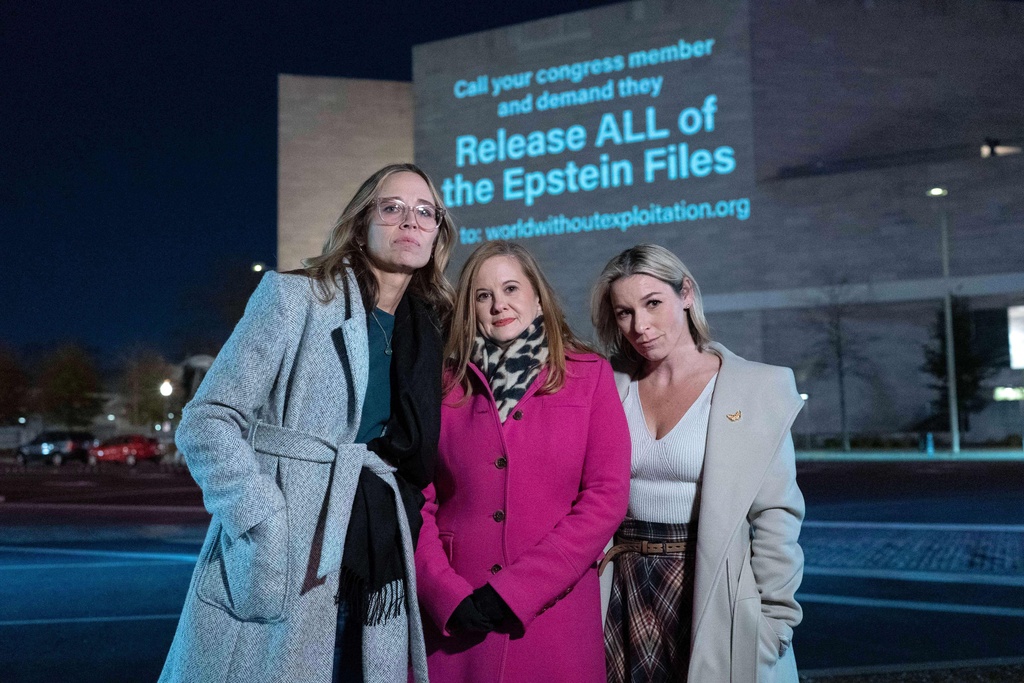Every morning with cup of hot tea, Michael McMahan takes in the unpolished wildness of L.A.'s 4,000-acre Griffith Park behind his apartment complex.
"I kind of feel special and like I'm a voyeur, like this this whole natural world is here, and I'm just sort of, like, peeking in on it," he said.
McMahan has nine trail cameras set up nearby. When he's lucky, he captures images of P-22, Griffith Park's famous resident mountain lion. And he's lucky a lot.
"So I've had cameras back here and have gotten P-22 a number of times," he said.
McMahan moved there nearly a decade ago after a divorce, having rarely ventured into the natural world. Today he's one of the most prolific chroniclers of P-22, capturing him 77 times on camera, including this footage from just a few weeks ago.
McMahan says he's become a P-22 fan boy, seeing a lot of himself in this lone cougar.
"He's getting a little older. I'm getting a little older. You know, we're two older bachelors roaming the Hollywood Hills," McMahan said.
It's amazing to go for a hike in Griffith Park and see all the other people walking and hiking and walking dogs, taking pictures of the Hollywood sign. And knowing that this large predator has made a life here, there's something about that that makes the place all the more wild.
P-22's story began a decade ago, when the lone male mountain lion — then a juvenile — set out from his home range in the Santa Monica mountains, crossed the 405 and 101 freeways unscathed, and ended up in Griffith Park.
He's since become a local legend. There's a dedicated P-22 exhibit at the Natural History Museum. He's graced the pages of National Geographic, that famous photo of P-22 with the Hollywood sign illuminated behind him. He's survived mange and rat poison and he may have eaten one of the zoo's beloved koalas. He's so celebrated that LA has an annual P-22 Day festival every October. Newsy's Sam Eaton even tasted a craft beer named after P-22 at downtown's Angel City Brewery with head brewer Layton Cutler.
LAYTON CUTLER: So, the beer itself is a hazy, pale ale, and it kind of has the same color as, you know, like a mountain lion's fur.
NEWSY'S SAM EATON: So, if a beer was a mountain lion this would be it?
CUTLER: Exactly. Cheers.
Across town at Los Angeles County's Natural History Museum, visitors browse its famous dioramas of North American wildlife, including a mountain lion and her cubs in their native California habitat.
Miguel Ordeñana, a wildlife biologist with the museum, was the first one to capture a trail cam photo of P-22 in Griffith Park back in 2012. It was a groundbreaking moment.
"When I saw that photo, it's like seeing Big Foot or Chupacabra for the very first time because ... most people were like, 'It's impossible' because Griffith Park was just thought to be just too disconnected from where we knew mountain lions existed in Los Angeles by freeways and urbanization. So, for me to get that photo, so many questions ran through my head," Ordeñana said.
The main one being how Angelinos would react to having an apex predator living in an urban park with 10 to 15 million visitors a year. But then he thought about P-22's story and the risky journey he took to arrive in this new territory unscathed.
"It's a story of survival," Ordeñana said. "It's a story of resilience in a place like Los Angeles that is home to a lot of immigrants. It's also a story of an animal crossing boundaries and borders and figuring out a way to survive."
Ordeñana says he can relate as a Latino who struggled to find his way in a white-dominated conservation field. It also shows why P-22 has had such wide appeal in one of the U.S.' most culturally diverse cities, bringing the message of endangered wildlife to communities and to people who never gave it much thought before.
Warren Dickson is with 3rd Rock Hip Hop, which teaches kids about the environment. He partnered with the National Wildlife Federation's #savelacougars campaign to bring a P-22-inspired mural to the heart of L.A.'s Watts neighborhood.
"You're looking at our home, Watts, California. Some of us call it 'the forgotten land' because sometimes you feel that way. But most of us just call it home. That's it," he said. "For us, this represented possibility. It represented survival. It represents migration. Everything that it took for our people to survive. The same thing that it took for the species you see here to survive."
But P-22's universal appeal across L.A.'s cultural diversity isn't his only legacy. He's also become the postercat for saving L.A.'s biodiversity.
National Park Service Biologist Jeff Sikich has studied the impacts of urbanization and habitat fragmentation on mountain lions in the Santa Monica mountains for two decades. In Liberty Canyon, near the 101 freeway, he uses radio telemetry to track nearby cougars.
Sikich says cougars in the Santa Monica Mountains are in trouble. Their habitat is surrounded by freeways, development, and the Pacific Ocean. It's essentially an island, isolating the cougar population here.
"So, our male lions here in the Santa Monica Mountains has some of the lowest genetic diversity ever recorded outside that of the Florida panther — the Florida mountain lion that went nearly extinct in the early nineties," he said.
There are anywhere from 10 to 15 adult cats living here at one time, which is as much as the habitat can support. But if something called "inbreeding depression" sets in, Sikich says these fragmented local populations could become extinct within 15 years. And they're already seeing the signs of that with several cubs recently born with kinks in their tails, a symptom of inbreeding. Thanks to Griffith Park's P-22 though, help is on the way.
"So this is a location where we just broke ground and we're going to build a wildlife crossing," Sikich said. "It's going to be a vegetated overpass over the 101 freeway. It's going to be located straight across here where you can kind of see this triangle on the hill above."
With P-22 as the poster cat for the project, the #savelacougars campaign helped raise the roughly $90 million needed to build what will become the world's largest wildlife bridge.
Vehicle strikes are a leading cause of death for mountain lions in the area, killing more than two dozen since 2002. Once completed the bridge will allow safe passage for not only cougar populations, but also countless other species.
Unfortunately, P-22 won't benefit from the crossing. He's still pinned in by freeways surrounding Griffith Park, nearing the end of his life with little chance of ever finding a mate. But Ordeñana at the Natural History Museum hopes that once he's gone, his legacy will live on forever — literally.
"If he's in good enough shape, we hopefully will partner with our taxidermist and be able to to mount him in a way that allows people to continue to learn about his legacy and his story for many years to come," he said.
A fitting Hollywood ending for L.A.'s most beloved feline.











